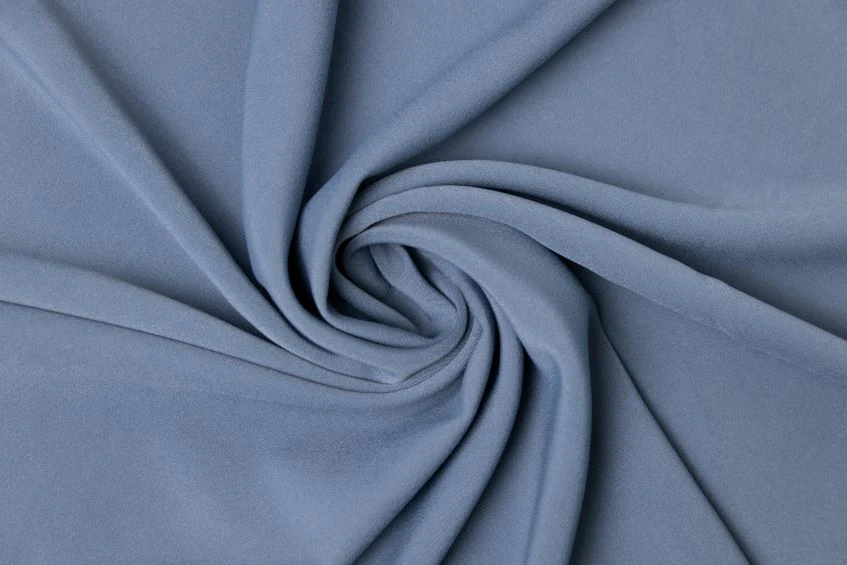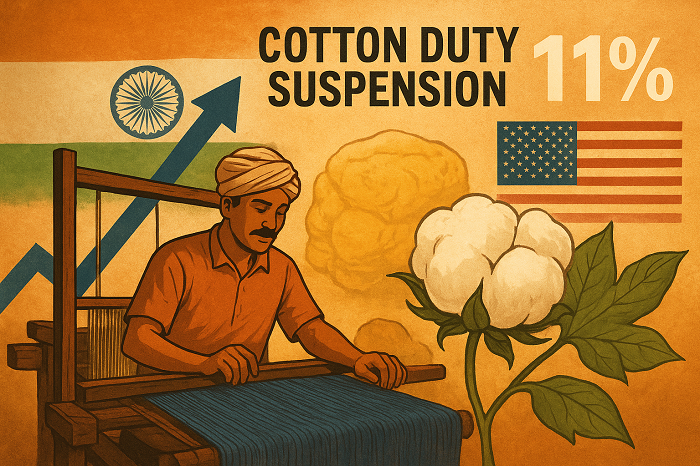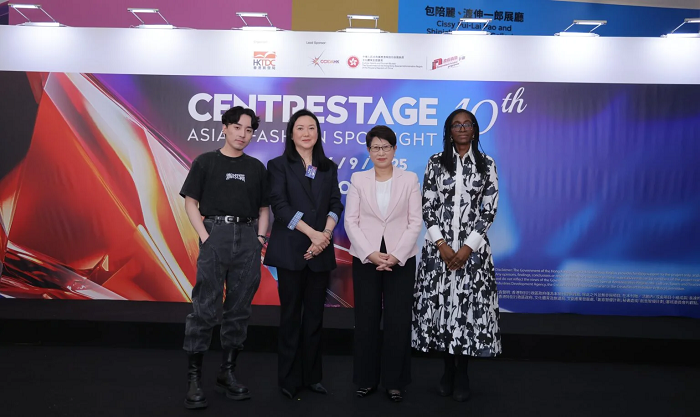FW
Witnessing steady growth, Sri Lanka’s apparel exports increased by 9.84 per cent to $4.55.16 million in July 2025 from $414.38 million in July 2024.
The most significant gains were witnessed in exports to the European Union (excluding the UK). Shipments to the region rose by 26.69 per cent while to other markets also grew by 24.24 per cent. In contrast, exports to the UK market increased by only 0.72 per cent, while exports to the US declined by 2.7 per cent for the month.
From January-July 2025, Sri Lanka’s total apparel exports reached $2,916.10 million, marking a 9.09 per cent increase from the $2,673.19 million recorded during the same period in 2024. Growth was seen across most markets, with exports to the EU (excluding the UK) rising by 18.2 per cent. Exports to other markets increased by 11.02 per cent, while shipments to the UK rose by 5.65 per cent and the US by 2.91 per cent.
A JAAF spokesperson notes, the performance highlights the adaptability of Sri Lanka’s apparel industry and its firm position in key markets such as the EU. The growth reflects the industry’s ongoing efforts to meet buyer expectations for speed, quality, and compliance, he adds. To maintain this momentum, the industry needs to focus on increasing trade opportunities, creating supportive policies, and boosting value-added processes throughout the supply chain, the sportsperson notes.
Leading specialty chemical company, DyStar’s 2024-25 Annual Integrated Sustainability Report highlights the company's progress in environmental responsibility and its ongoing commitment to sustainability, despite challenges from optimizing its global manufacturing footprint and meeting rising demand.
According to Xu Yalin, Managing Director and President of DyStar Group, the report reflects DyStar Group’s steadfast commitment to advancing environmental stewardship, social responsibility, and sound governance. The company believes in bridging responsibility with innovation - delivering high-performance products and solutions that meet the evolving demands of our industry, he adds.
The report also reinforces DyStar’s efforts to accelerate climate action while navigating the complexities of global operations. The company is on track to meet its 2025 targets and continues to adapt to a volatile regulatory landscape. As DyStar prepares to finalize its 2030 goals, it will continue to prioritize production efficiency and optimize its manufacturing footprint.
USDA’s August crop production and supply/demand estimates for the 2025 cotton crop reveals a significant reduction in both acreage and estimated production. While prices have not yet increased, a smaller US crop could eventually improve the market outlook.
The report shows, production is likely to decline by 1.3 million bales from July 2025 and 1.2 million from last year’s production to 13.21 million bales.
Area under cotton cultivation is likely to decline by 843,000 acre from the June projection. Even more notable is the projected increase in abandoned acreage, which now accounts for 21 per cent of planted acre, up from 14 per cent. This will result in a total decline of 1.3 million acre expected in area to be harvested.
Texas and Georgia account for the majority of the planted acreage decline, with reductions of 440,000 acre and 160,000 acre, respectively. The fact that almost every state saw a reduction in acreage is considered highly unusual. Despite the news of a smaller crop, prices have not seen a sustained increase. December futures initially rallied but remain mostly in the 67 to 70 cents range, suggesting the market is waiting to see how crop conditions and demand play out.
The USDA report also highlights several other key global trends like the US exports projections for the 2025 crop year were lowered by 500,000 bales, likely due to the smaller available supply; China’s cotton consumption increased by 1 million bales, though its production also increased by 500,000 bales.
Global cotton is likely to decline slightly with lower projections for India, Turkey, and Bangladesh.
In recent weekly reports, export sales totaled 251,000 bales, bringing the total sales for the 2025 marketing year to 3.32 million bales. However, shipments need to average around 231,000 bales per week to meet USDA’s projection. Notably, sales to China have been almost nonexistent.
The Australian Fashion Council (AFC) has launched a new export program to help Australian fashion brands foray into the major international markets. Titled, ‘Global Gateways,’ the initiative's first mission will take place at Centrestage in Hong Kong from September 3-6, in partnership with the Hong Kong Trade Development Council (HKTDC) and with support from Investment NSW.
A delegation of seven Australian designers - Bondi Born, Maara Collective, bond-eye, West 14th, Re/lax Remade, Monika Branagan, and Neuono - will showcase their collections to buyers and media. The program includes business-matching and on-the-ground support to help the brands secure commercial deals.
Centrestage is a significant platform for expanding into Asia and beyond, attracting buyers from China, Taiwan, Korea, Japan, and the UAE.
The delegation will also participate in a cultural diplomacy event co-hosted with the Department of Foreign Affairs and Trade (DFAT) to strengthen cultural and trade ties. This inaugural mission is further supported by Hong Kong Airlines, which is sponsoring flights for the designers to celebrate its new Sydney-Hong Kong route. This partnership symbolizes the new opportunities available for Australian fashion in one of the region's most influential trade centers.
According to Jaana Quaintance-James, CEO, AFC, Global Gateways is about embedding Australian fashion into the world’s most high-value markets. Hong Kong's strategic location as a re-export hub and its proximity to Australia proves as major advantages, she highlights.
The program comes at a critical time for the Australian fashion and textile industry, which generates $28 billion annually and employs nearly 500,000 people. With recent changes to US tariff policies increasing pressure on exporters, there's a strong need for diversified market strategies across Asia, Europe, and the Middle East. The AFC has positioned Global Gateways and Australian Fashion Week together to create a powerful year-round program that both brings international buyers to Australia and helps local brands expand globally.
Sophia Chong, Deputy Executive Director, HKTDC, observes, Centrestage is an ideal meeting point for designers and brands, reinforcing Hong Kong’s status as a global fashion and cultural hub. Looking ahead, the AFC plans to expand Global Gateways in 2026 with a rolling schedule of in-market events and resources to support sustained commercial success for Australian brands.

The global cotton market in 2025 is passing through a period of shifting trade relationships, geopolitical tensions, and the rising urgency for supply chain resilience. The International Cotton Advisory Committee (ICAC) report, particularly for May 2025 and Cotton Market Report June 2024, reveal how these forces are redrawing the map in terms of production, consumption, and trade flows worldwide. For the 2024-25 season, world cotton lint production is estimated at 25.8 million tonnes, slightly ahead of global consumption at 25.5 million tonnes. Yet, despite the apparent balance, trade forecasts have been revised downward to 9.45 million tonnes, largely due to reduced import demand from China.
The lasting echo of the US-China cotton dispute
The most disruptive undercurrent in the cotton trade remains the long-running dispute between the US and China. What began as a tariff war in 2018 continues to reverberate through supply chains. “These tariffs not only increased costs but also disrupted global cotton supply chains, forcing a re-evaluation of sourcing strategies,” notes the Cotton Review May 2024.
The brief thaw brought by the January 2020 Phase One trade agreement ended with its end in December 2021. Today, Chinese import tariffs on US raw cotton stand at 26 per cent for in-quota and 65 per cent for out-of-quota shipments. The US, in turn, levies tariffs ranging from 7.5 to 25 per cent on Chinese textile and apparel products.
This tension has driven China, the world’s largest cotton consumer at 8.3 million tonnes in 2024-25, to diversify away from US cotton, sourcing more from Brazil and Australia. Statistics reveal that in 2017, the US supplied 53 per cent of China’s cotton; by 2019, that share had fallen to just 22 per cent. By 2023, Brazil nearly matched US supply volumes to China.
Shifting trade baskets and new powerhouses
The knock-on effects are not confined to Asia. The US has broadened its sourcing network for textiles and apparel, increasingly relying on countries like Vietnam, Bangladesh, Turkey, Pakistan, Mexico, and India. Between 2017 and 2021, export values from these countries to the US saw notable growth—Vietnam by 6 per cent annually, with Bangladesh and Turkey each rising 5 per cent annually.
Several countries are moving to position themselves in the restructured cotton trade:
• Bangladesh is on track to become the world’s largest cotton importer in 2024-25, negotiating duty-free access for US cotton and setting up a dedicated bonded warehouse for these imports.
• Egypt is expanding domestic capacity, with imports revised upward to meet growing consumption.
• Indonesia is considering tariff cuts for US cotton rather than retaliating against tariffs.
• India has already consumed five times more cotton in the first half of the 2024-25 season than in the same period last year, while negotiating further US imports.
• Pakistan has boosted US cotton purchases and is exploring expanded imports of both cotton and soybeans.
• Vietnam is likely to slash tariffs to secure more US cotton.
Table: US cotton lint exports by partners and tariff impacts (2024-25)
|
Export Partners |
Percentage of total US cotton lint exports (2024-25) |
Previous rate |
Any retaliatory rate announced on US |
Updated rate by US |
Timeline |
|
China |
10% |
34% |
125% |
145% |
no timeline set |
|
Pakistan |
23% |
29% |
None |
10% |
29% paused until July 25 |
|
Turkey |
8% |
10% |
None |
10% |
no timeline set |
|
Vietnam |
17% |
46% |
None |
10% |
46% paused until July 25 |
|
Bangladesh |
5% |
37% |
None |
10% |
37% paused until July 25 |
|
India |
5% |
26% |
None |
10% |
26% paused until July 25 |
Table: World cotton lint balance sheet (2024-25 Est.)
|
Category |
Value ('000 metric tonnes) |
|
Production |
25829 |
|
Beginning Stocks |
17132 |
|
Imports |
9450 |
|
Consumption |
25527 |
|
Exports |
9450 |
Volatility ahead
The cotton sector’s challenges are not just about geopolitics. Competition from man-made fibers has been eroding market share for years, while new sustainability regulations add another layer of complexity. “Considering the complexity of the cotton value chain, the implementation of all these policy changes will be difficult and likely would add costs and audit fatigue to the value chain,” the ICAC warns.
Further uncertainty comes from climate-related risks such as drought conditions in Texas, a major US producing state and sluggish global GDP growth, both of which could squeeze exportable supply and demand alike. Yet, the industry has shown remarkable adaptability. By diversifying sourcing, negotiating tariff relief, and investing in logistics resilience, cotton producers and textile manufacturers are proving that the sector can face turbulent times though perhaps not without a few hiccups.
Urban Outfitters is teaming up with Levi's for the second season of its 'On Rotation' in-store experience, creating an immersive denim destination that blends Levi’s classic styles with UO's unique vibe. The collaboration will run from August 22 through September 30 at five Urban Outfitters locations nationwide and online.
Building on the brand’s focus on experiential retail, the 'On Rotation: Levi's' concept aims to create spaces that inspire customers and offer fresh perspectives on fashion. The in-store experience is designed to feel like a vintage flea market, featuring the latest Levi's denim styles like the 501 90s, Baggy Dad, and Super Baggy Barrel, alongside a curated mix of rare vintage finds. Including highly sought-after paper tag jeans and jackets, the vintage collection was hand-picked by both the Levi's and UO Vintage and ReMade teams.
Urban Outfitters has always been rooted in discovery, and the On Rotation installation with Levi's takes that to the next level, says Cyntia Leo, Head- Brand Marketing, Urban Outfitters.
The launch commenced with a flagship event in Austin, TX, transforming the store into a denim-fueled market. It featured a Levi's Tailor Shop, local vintage vendors, live music, and food. Similar community-driven events will also be hosted at locations in Walnut Creek, Las Vegas, New York City (Broadway), and Miami Beach.
Marybeth Cahill, Chief Merchandising Officer, notes, the collaboration offers the full spectrum of denim, from classic 501s to rare archival pieces, all curated with UO’s distinctive point of view.
The ‘On Rotation’ series, which began in May 2025 with Nike, is designed to deliver a fun, engaging, and discovery-driven experience for today's customers by pairing curated products with immersive storytelling and design. This partnership with Levi’s reinforces Urban Outfitters' commitment to providing unique experiences and products that resonate with its Gen Z audience.
In July 2025, the Taiwan Textile Federation’s Textile Export Promotion Project (TEPP) launched a new virtual platform designed to showcase sustainable and innovative fabrics from leading Taiwanese mills. Called, Taiwan Digital Fabric Sourcing Centre, the online platform invites global buyers to explore a wide range of eco-friendly and high-performance textiles and submit direct inquiries.
Highlighting Taiwan's commitment to textile innovation with a focus on environmental responsibility, the platform features fabrics like organic cotton, recycled polyester, performance textiles, and smart textiles, with detailed information on their certifications and unique features.
Buyers can digitally view high-resolution fabric swatches, browse by company, and easily submit inquiries. Sourcing specialists are on hand to respond within two business days to assist with further details and support global trade.
The platform showcases several notable fabric innovations, including S Cafe yarn by Singtex, which is made from recycled coffee grounds and offers UV resistance and odor control. It also features the SEACO fiber by Grandetex, a biodegradable fiber that naturally decomposes after use and the Pineapple leaf-based fiber (PALF) by UKL which upcycles agricultural waste into functional textile materials.
This new digital center serves as a key resource for buyers looking for sustainable textile solutions and reinforces Taiwan’s position as a leader in innovative and eco-friendly fabric production.
H&M has launched in maiden store in Brazil along with a new e-commerce platform. Launched at Shopping Iguatemi in São Paulo the new store offers H&M’s fashion-forward, sustainable, and affordable products to Brazilian customers. As a part of its strategy, the company continues to focus on sustainability with an aim to provide quality fashion at a great price in a more sustainable way.
Daniel Erver, CEO, H&M Group, notes, bringing H&M to Brazil involves building a lasting connection with the country and its people. The launch provides the brand with an opportunity to celebrate creativity and self-expression through fashion.
Joaquim Pereira, Country Manager, H&M Brazil, affirms, the warm welcome from Brazilian customers has been truly inspiring. He looks forward to connecting with customers across the country.
The launch of H&M is an important milestone in Brazil’s Known for its wide range of styles and its commitment to sustainability, the brand’s dual-channel approach with a physical store and an online platform gives customers more avenues to shop. This launch also exhibits H&M's strong commitment to the Brazilian market and its belief in the country’s growth potential.
Valued at $63.05 billion in 2024, the global eco-fibers market is projected to reach a value of $106.45 billion by 2035. The market is set to grow at CAGR of 4.89 per cent from 2025-35.
Eco-fibers are environmentally friendly textiles derived from natural sources, like organic cotton, hemp, and wool, or from recycled materials such as polyester. These fibers are quickly gaining momentum as sustainability becomes a core focus in various industries, including fashion, home furnishings, automotive, and industrial manufacturing.
The market's growth is driven by rising environmental concerns, stricter carbon emission regulations, growing consumer awareness about sustainable clothing, and new innovations in biodegradable and circular materials. As global industries actively work to reduce their ecological footprint, the demand for eco fibers is expected to grow dramatically through 2035. This shift highlights both a change in consumer behavior and an industry-wide response to climate-conscious production.
French cashmere brand Kujten is making its US debut with a new store in New York. Currently having over 50 boutiques across India, the brand will open its store on the Madison Avenue in the city's Upper East Side,
The new store will feature Kujten's complete collection of women's, men's, and accessories lines. The interiors of the store have been designed to reflect the brand's signature identity of contemporary luxury and minimalist design.
Kujten's move into the US market follows a successful collaboration in 2024 with Los Angeles-based tattoo artist Dr Woo. The partnership laid ‘0the foundation for a genuine relationship with the American audience,’ as per a company’s press release.
Founded in 2012 by Carole Benaroya and Stéphanie Eriksson, Kujten was created with the mission to break away from cashmere's traditional image and breathe new life into it. The founders sought to incorporate statement pieces and diverse cultural influences into their designs, all while embodying their core values of ‘freedom, creativity, and sharing.’











